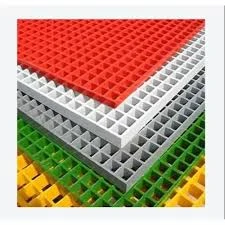loading...
- No. 9, Xingyuan South Street, Dongwaihuan Road, Zaoqiang County, Hengshui, Hebei, China
- admin@zjcomposites.com
- +86 15097380338
- Welcome to visit our website!
frp bar
Understanding FRP Bars An Innovative Solution in Construction
Fiber Reinforced Polymer (FRP) bars have emerged as a groundbreaking innovation in the field of construction and civil engineering. As traditional steel rebar faces challenges such as corrosion, increased weight, and limited lifespan, FRP bars offer a lighter, more durable alternative that successfully addresses many inherent deficiencies in conventional materials.
What are FRP Bars?
FRP bars are composite materials consisting of high-strength fibers, such as glass, carbon, or aramid, embedded in a polymer matrix. The result is a product that not only offers exceptional tensile strength but is also resistant to corrosive environments. This kind of material is particularly advantageous in conditions where concrete structures are exposed to harsh chemicals or salt, such as in coastal areas, industrial plants, and environments affected by de-icing salts.
Advantages of FRP Bars
1. Corrosion Resistance One of the standout features of FRP bars is their high resistance to corrosion. Unlike steel, which can succumb to rust and deterioration over time, FRP bars maintain their integrity even in the harshest chemical environments. This significant reduction in maintenance and repair costs makes them a highly attractive option for long-term projects.
2. Weight Efficiency FRP bars are much lighter than traditional steel rebar, which translates to easier handling and transportation. The reduced weight facilitates more straightforward installation processes and can even result in lower shipping costs during construction.
3. High Strength-to-Weight Ratio Despite being lighter, FRP bars boast an impressive strength-to-weight ratio. This means that less material can be used while still ensuring structural reliability, which can be especially useful in projects requiring optimization of resources.
frp bar

4. Non-Magnetic Properties Unlike steel, FRP bars do not conduct electricity, making them ideal for use in environments sensitive to electromagnetic interference. This characteristic is particularly valuable in applications such as nuclear facilities and MRI rooms.
5. Design Flexibility The versatility of FRP bars allows engineers to explore more creative architectural designs. Their lightweight nature can enable the construction of structures that were previously deemed too risky or challenging with traditional materials.
Applications of FRP Bars
The applications of FRP bars span a variety of sectors within civil engineering and construction. They are commonly used in bridge construction, where their resistance to corrosion is crucial for longevity. In parking garages and sewage treatment plants, where exposure to brine or chemicals is prevalent, FRP bars offer substantial benefits. Additionally, their use in retrofitting and repair projects can extend the life of existing structures without the need for extensive demolition.
Challenges and Considerations
While the advantages of FRP bars are clear, there are still some challenges to consider. The initial cost of FRP bars can be higher than traditional rebar, which may deter some projects from adopting this innovative technology. Furthermore, since FRP is relatively new compared to conventional materials, there is a growing need for standardized codes and practices to ensure safety and reliability in comprehensive applications.
Conclusion
In summary, Fiber Reinforced Polymer bars represent a significant advancement in the field of construction materials. Their corrosion resistance, lightweight nature, high strength-to-weight ratio, and versatility present compelling advantages over traditional steel rebar. As the construction industry continues to evolve, the integration of FRP bars into new projects promises not only to enhance durability and reduce maintenance costs but also to foster more innovative design possibilities. Embracing this technology not only benefits contractors and engineers but also contributes to the sustainability and longevity of infrastructure for future generations.
-
GRP Structures: The Future of Lightweight, High-Performance EngineeringNewsJun.20,2025
-
FRP Water Tank: High-Performance Storage for Corrosive and Clean Water SystemsNewsJun.20,2025
-
FRP Square Tube: The New Industry Standard for Chemical and Structural ApplicationsNewsJun.20,2025
-
FRP Pultruded Profiles: The Ultimate Choice for Lightweight Structural StrengthNewsJun.20,2025
-
FRP Handrails: The Safer, Smarter, and Stronger Choice for Modern InfrastructureNewsJun.20,2025
-
FRP Grating: The Smart Solution for Durable, Lightweight Industrial FlooringNewsJun.20,2025
-
Why Choose a Galvanized Water Tank for Your Storage NeedsNewsMay.21,2025
